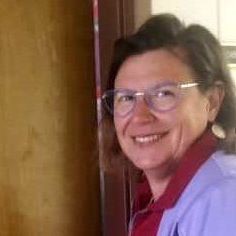Arts: Art and Urban Studies
A special issue of Arts (ISSN 2076-0752).
Deadline for manuscript submissions: closed (30 April 2024) | Viewed by 17769
Special Issue Editors
2. Research Scholar at Department of Languages, Literatures and Culture and Women's Studies & Gender Research, Colorado State University, Fort Collins, CO, USA
Interests: architecture; art; art practice; urban studies; film; communication; Asian studies; women studies; social sciences
Special Issues, Collections and Topics in MDPI journals
Interests: environmental design; daylighting simulation; solar radiation; indoor and outdoor thermal comfort; building energy efficiency
Special Issues, Collections and Topics in MDPI journals
2. Researcher in International Cooperation, Borders and Urban Contexts, Visiting Professor in Italy and Australia
Interests: architecture; urban studies; cultural heritage; protection of cultural heritage
Special Issues, Collections and Topics in MDPI journals
Special Issue Information
Dear Colleagues,
The crucible of large-scale natural disasters, wars, pandemics, and so forth has sky-rocketed the already dynamic metamorphosis of cities, both in their spatial structures and in the social processes that sustain them. For its part, the active insertion of art in the city has generated a continuous exploration of public art, collective social expressions, light experimentations, spatial speculations, the interactivity of urban devices, the recovery of the heritage of antique buildings, and urban cradles.
These questions have been manifest in the city and in artistic discourses about urban spaces, including the traditional fine arts (landscape painting as recognition of the awareness of urban space, or the artistic dimension of cartography), audio–visual arts, and new interactive formats.
For this Special Issue, we welcome contributions that, even starting from the depiction of specific phenomena of a location or a group of enclaves, provide results that lead us to a greater understanding of the complex changes that are taking place in cities. Likewise, we encourage the submission of articles that deal with direct artistic experiences in the urban realm or reflections on the representation of the city in artistic, visible, and intangible formats. Spatial science contributions may showcase this portrait of cities as a fluid and flexible network, based on many variables, and that organizes itself over time, progressing towards geometric mechanics. Theretofore, both empirical contributions and those that represent a theoretical advance in straddling art and urban studies will be considered.
We believe that these matters must be approached from a scientific point of view, since it is science that gives form to the formless, and that is why it has often been compared to art or even magick. We will explore these procedures of the generation of form in the amorphous context of urban culture and spatial arrangements.
This special issue is a joint Special issue with /Architecture/. You can view our page on /Architecture/ journal via the link below:
https://www.mdpi.com/journal/architecture/special_issues/architecture_art_urban_studies.
Prof. Dr. Inmaculada Rodriguez Cunill
Prof. Dr. Jose M. Cabeza-Lainez
Dr. Guido Cimadomo
Guest Editors
Manuscript Submission Information
Manuscripts should be submitted online at www.mdpi.com by registering and logging in to this website. Once you are registered, click here to go to the submission form. Manuscripts can be submitted until the deadline. All submissions that pass pre-check are peer-reviewed. Accepted papers will be published continuously in the journal (as soon as accepted) and will be listed together on the special issue website. Research articles, review articles as well as short communications are invited. For planned papers, a title and short abstract (about 250 words) can be sent to the Editorial Office for assessment.
Submitted manuscripts should not have been published previously, nor be under consideration for publication elsewhere (except conference proceedings papers). All manuscripts are thoroughly refereed through a double-blind peer-review process. A guide for authors and other relevant information for submission of manuscripts is available on the Instructions for Authors page. Arts is an international peer-reviewed open access semimonthly journal published by MDPI.
Please visit the Instructions for Authors page before submitting a manuscript. The Article Processing Charge (APC) for publication in this open access journal is 1400 CHF (Swiss Francs). Submitted papers should be well formatted and use good English. Authors may use MDPI's English editing service prior to publication or during author revisions.
Keywords
- visual and performing arts
- city
- urban studies
- imagined landscapes
- digital and scientific art
- film and city
- urban semiotics
Benefits of Publishing in a Special Issue
- Ease of navigation: Grouping papers by topic helps scholars navigate broad scope journals more efficiently.
- Greater discoverability: Special Issues support the reach and impact of scientific research. Articles in Special Issues are more discoverable and cited more frequently.
- Expansion of research network: Special Issues facilitate connections among authors, fostering scientific collaborations.
- External promotion: Articles in Special Issues are often promoted through the journal's social media, increasing their visibility.
- Reprint: MDPI Books provides the opportunity to republish successful Special Issues in book format, both online and in print.
Further information on MDPI's Special Issue policies can be found here.
Related Special Issue
- Architecture: Art and Urban Studies in Architecture (1 article)






